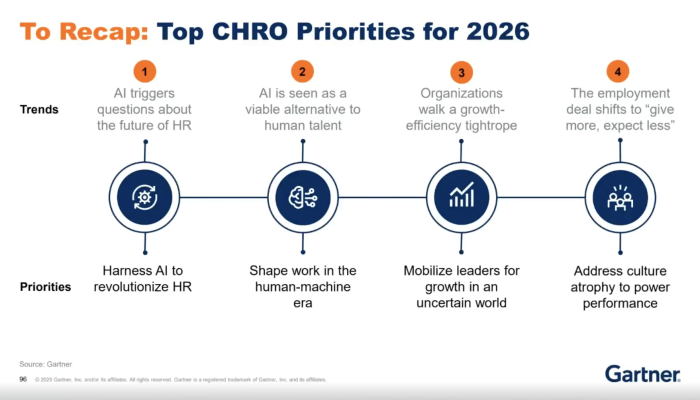Each human-related decision bears strategic importance for companies. “Organisations with advanced PA functions outperform those with an emerging one with 56% higher profit margins and a 22% higher return on assets.” As an HR leader, how can you influence data-based business decisions? How can you make senior executives committed for HR analytics? Where are HR professionals’ weaknesses in analytics? Where is the future of HR analytics?

Decision making and performance in business
Before we get into the details, let us first clarify what we call the ‘subject’ of our topic.
It can be called either HR or People Analytics, as both aim to discover, interpret and communicate meaningful patterns in workforce-related data to support good decision making and improve organizational performance. The focus of this topic is on people managed by business areas and not the HR function, thus I prefer to use the term People Analytics (hereinafter PA). All the more so because business practice shows that “we link data about people with business data to find answers to business related questions and problems. In fact, 70-80% of company analyses are seeking answers to business issues, not HR problems.”
I use the term HR Analytics when the data and analyses relate exclusively to the processes, operations, colleagues and challenges of HR function.
The HR People Analytics Skills Gap
A global survey in 2021 was conducted by Karen Johnson, who interviewed 837 HR professionals in 42 countries. The aim of the research was to identify the HR People Analytics skills gap. Some thought-provoking results:
- 55% of respondents rated their PA skills as basic, 35% as intermediate, 8% as advanced with only 2% rating themselves as highly skilled. 91% of respondents advised they have a PA skills gap, including those already working in PA.
- Excel (37.7%) and HRIS (20%) were clear software tool winners. With Microsoft Access, Workday, SAP, Oracle, SAP Success Factors, Tableau, Python, R, PowerBI, IBM SPSS packages coming in between 0.3% and 5.7%.
- 34% of organisations did have the right amount and quality of data.
According to the survey, for the PA skills gap for HR professionals are less about HR professionals wanting to avoid the numbers, and more about the interwoven complexities of contributory factors including time & data issues, skill levels, senior management buy-in and understanding.
It is quite clear from all this that we are at the beginning of the journey.
Engaging senior management
Surveys show that HR data are considered the least trusted of all the data available to senior executives and are treated with high skepticism. This can cause frustration for HR professionals, as they feel that reporting is a waste of time and effort.
One of the reasons behind is that senior executives do not fully understand the role, added value, and return on investment of PA. They often do not know what they can expect from PA and are therefore not clear about their expectations. It also often happens those senior executives are not convinced of the reliability of data (e.g., outdated, inaccurate, not comparable with data extracted from other systems) or feel that they receive too many PA reports and therefore it is not clear to them what is important, what they should focus on and how this relates to the overall business strategy.
For this reasons, your job as an HR leader is to convince and make senior management committed for PA.
- Creating clarity is essential. You cannot engage anyone until you convince them why it will be beneficial for the company as a whole and for them personally. It is useful to argue for PA with data even if you do not have sufficient data or expertise yet.
- One of the most effective ways of engagement is to present the analysis of relevant business cases (problems). So, focus on areas and topics that directly improve business performance.
- People analytics cannot work without early, significant investments. Therefore, companies must make a serious commitment to this effect, both in terms of tools (technology) and HR resources. Look carefully at possible solutions and make suggestions to senior management.
In my opinion, the acceptance and success of the PA by senior executives mainly stands or falls on this.

The ‘why’ behind the business problem
PA alone has no value unless it can solve a problem. So, before you create a specific business case supported by people analytics, define the problem.
Regular consultation with business leaders will help you understand overall business goals, symptoms/signs that are hindering the achievement of their goals and the needs of the leaders. Your smart questions in the conversations will lead you to the possible problem, to its roots. This will give you a clear understanding of which people-related data or metrics you should ethically collect, analyze and link with other business data to fully understand the problem. Don’t be disappointed if senior executives or investors are not looking at the data! They are interested in the meaning of the information behind the data and your suggestions for changes to be implemented, which should be an integral part of the business case summary.
Let’s look at some real business problems:
- Loss rate of hires and exits to your competitors: If you lose most of your hires to your competitors or if your employees exit to your competitors, this will mean significant disruption and stagnation of growth for your company.
- Customer retention rate by sales representative: Customer retention leads to an increase in business revenue, customer loyalty and customer referrals. A continuous or drastic decrease in customer retention rates clearly causes a value leakage and has a negative impact on the reputation of the company.
- High performers turnover in key positions: If the voluntary fluctuation of high performers in key positions increases over a period of time or persists for a longer term, it causes a loss of performance.
The future of people analytics
PA can serve as a powerful weapon in your hands to influence senior management decisions and strengthen your own business credibility. I recommend that you always focus on issues and data with the greatest business impact, and provide objective solutions that are directly related to increasing competitive advantage, overall business performance, attracting and retaining staff, and identifying risk factors. It’s good to know that HR leaders are increasingly expected to be proactive and anticipate future trends.
New data sources and (at several locations) sophisticated digital tools are available to companies, enabling wider exploitation of data for business purposes. Where is the future of PA? Not necessarily in HR. Analysis activities within separate functions will be merged to ensure the reliability and comparability of data and analyses deriving from different sources. A central company analytics team (enterprise analytics) will be created, where people with different expertise (e.g., commercial, finance, HR, etc.) and data analytics experience will work together to solve business problems.
Inspirations: The HR People Analytics Skills Gap by Karen Johnson, Where is the future of People Analytics? Not in HR. by Peter Romero


